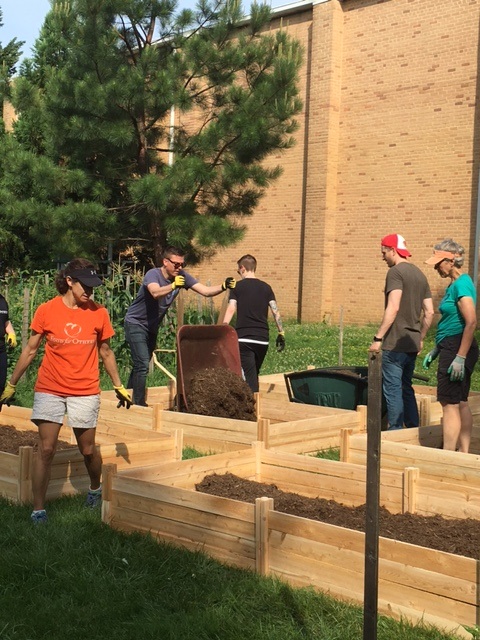The benefits to community gardens are endless. They provide fresh food to populations that are often underserved, offer a space to gather, connect and build relationships, and beautify neighborhoods. A community garden created in conjunction with a food bank can be both a provider of local produce and a teaching tool.
 Once the decision is made to construct the inaugural garden, the next step is to map out what should be grown in it. It is always best to ask the clients for their input. This way the clients will be happy with the harvest, and this information is extremely helpful when creating a
Once the decision is made to construct the inaugural garden, the next step is to map out what should be grown in it. It is always best to ask the clients for their input. This way the clients will be happy with the harvest, and this information is extremely helpful when creating a boiler plate
statement to potential funders to cover the cost. Potential organizations that can fund a new community garden include the county health department, the local garden club, or established non-profits and stakeholders looking to fund health/ community initiatives.
After deciding which fruits and vegetables to grow, it is important to plan out how the garden will be set up. This includes the size of the garden plot, whether or not to have raised beds, the height of the raised beds if choosing to use them, how the soil is drained, type of mulch, and soil type. All of these factors will affect how the plants will grow.
There are a number of resources—in reality and on the internet—that can provide support to a novice gardener. A great resource, of course, is a volunteer who operates their own successful garden. Extension office agents are also available to help with advice via email or during office hours. And of course, the web has a plethora of information for new gardeners. The USDA’s website is a great place to start.
Not everyone who helps construct the inaugural garden needs to be an expert in gardening. While it is important to have expert gardeners on site while constructing the garden, it is also important to have people to help with the physical labor for constructing and planting the garden. Regardless of their experience level, the more passionate the volunteer is about growing produce, the more involved they will be in making sure it is successful.
It’s great to have volunteers within the community out there growing food for clients of the food bank. But once the garden is up and running, it’s much more sustainable and can be used as a teaching tool if the clients run the garden themselves. The inspiration here is: “Give a man a fish, feed him for a day; teach a man to fish, feed him for a lifetime.”
Staff at a local school or social services organization can help to identify low-income families that might be interested in growing their own food. The families should commit to tending the garden for a pre-agreed on amount of time and should be allowed to keep everything they grow (if they have excess, it will go back to the food bank). One may draw up a contract to ensure the garden is taken care of and that the families are committed.


